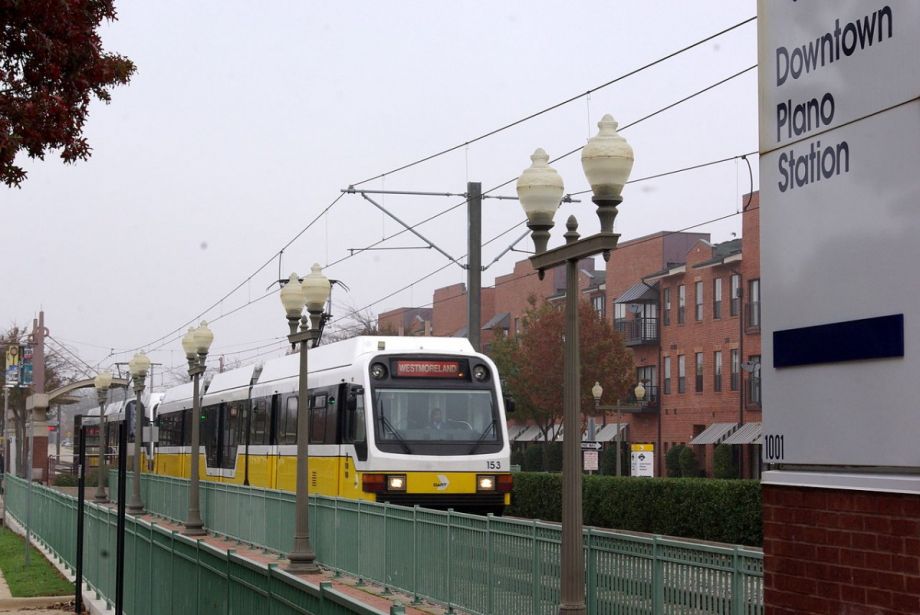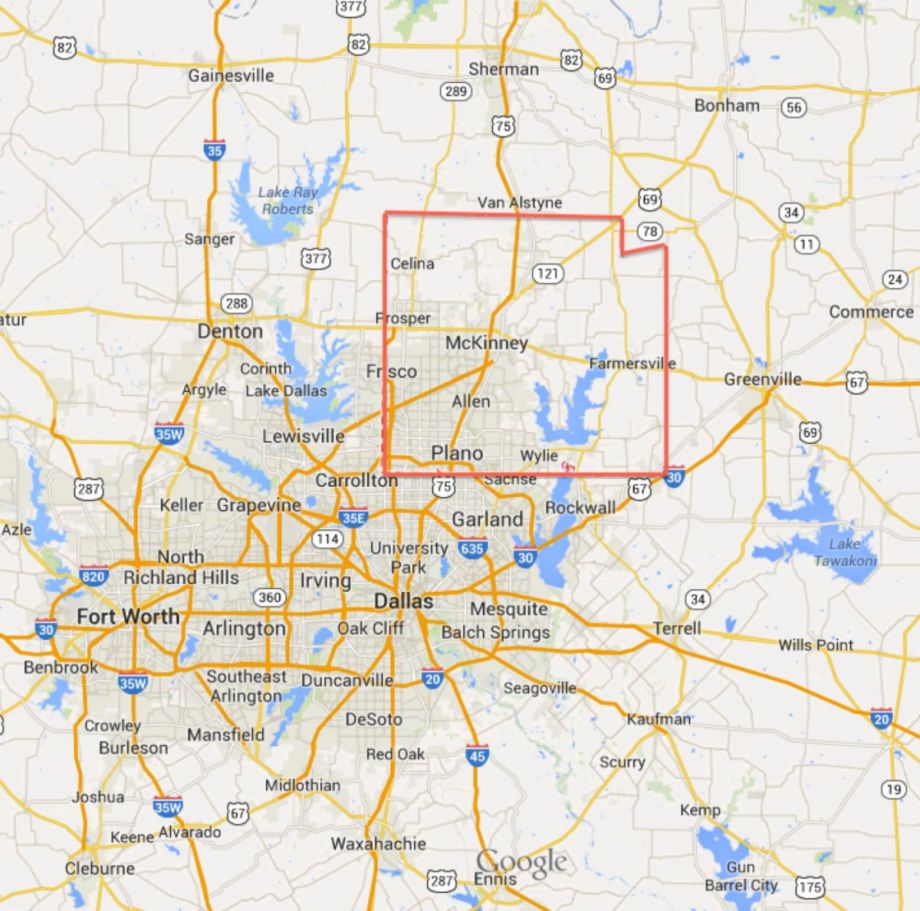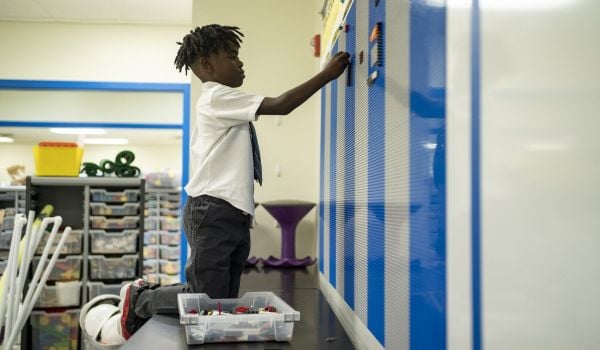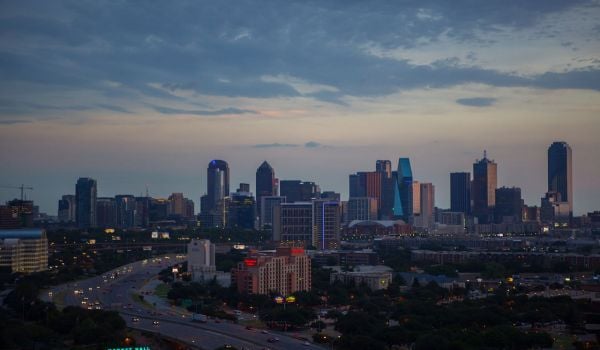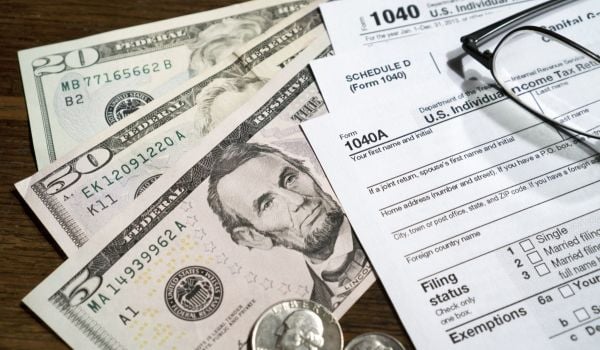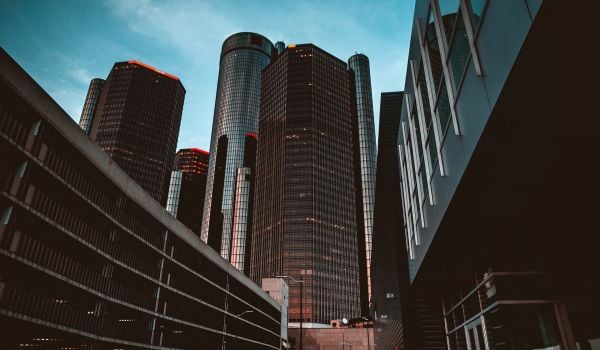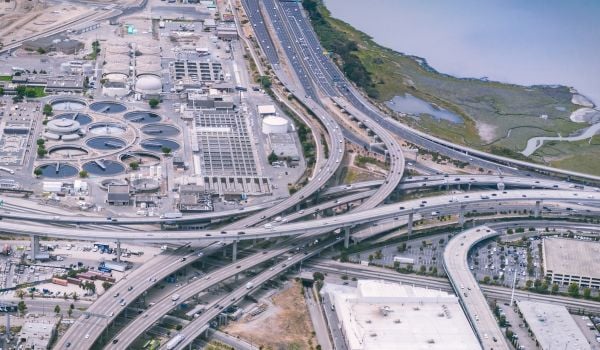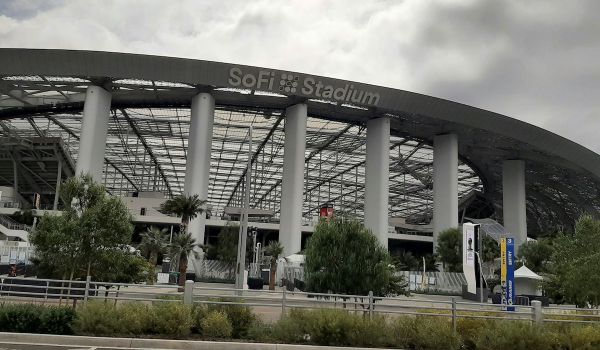From Dallas light rail’s northernmost stop, unused right-of-way extends almost 50 miles, stopping just short of the Oklahoma border. For cities in quickly growing Collin County to the metro’s northeast, those unused shadow tracks tell the story of a region in flux, urbanizing quickly but held back by a transit-eschewing past.
In 1983, 14 cities in the then much smaller Dallas metro voted to form the Dallas Area Rapid Transit agency (13 eventually joined) and agreed to pay a one-cent sales tax for building and maintenance fees. (About $8.2 billion was generated in 2012.) Plano became Collin County’s only member of DART, while cities farther north, like Allen and McKinney, did not.
The vote came after state officials passed a law allowing the tax bump. Originally meant only for transportation, the sales tax revenue was eventually used for other civic projects, a concession that had unintended consequences. Cities spent the money on what they considered top projects — parks, sports complexes, police services — little realizing how much they’d need transit later on. Today, the metro landscape is still shaped by priorities from long ago.
Meanwhile, its population is rapidly growing, and not necessarily in a way planners would consider smart. Beyond DART’s exoskeleton, especially in Collin County, residents commute in to Dallas and workers commute out.
“This isn’t the same metropolitan area that existed 30 years ago, when the Dallas region was less than half the size it is today,” says Deputy City Manager of Plano Frank Turner. “There’s greater demand on transportation systems and transit, and many of the cities that are outside of this 13-city core have significant population and employment centers.”So why don’t other cities join? In some cases, putting that cent toward DART is still a political turn-off. But in many cases, they’ve committed it to capital projects that are not yet paid off. In Texas, sales tax is capped at 6.25 percent, with up to an additional 2 percent for municipal projects.
According to Morgan Lyons, a spokesperson for DART, a number of outer-ring suburbs “just don’t have a full penny” to become part of the light-rail system anymore.
Which brings us back to that northern unused right-of-way. With transit demand growing, some cities along the Highway 75 corridor are contracting cheaper bus services. One such service, called Texoma Area Paratransit Service or TAPS, is particularly innovative. Light-rail lines are by nature fixed, but TAPS’ history as an on-call paratransit service allows it to efficiently serve the areas most in need.
TAPS’ Dan Acree says the agency began growing when it received a grant to address reverse commuting patterns. Residents of southern Oklahoma and northern Texas were commuting to work at a tribal casino close to the state border in a public transportation no-man’s-land.
“That was when we began playing with a fixed route, seeing if we could be something other than a van and station wagon service for old folks,” he says.
Going across state lines and between rural towns isn’t the usual pattern for municipal buses, but as the area grew so has TAPS. In 2009, ridership hovered around 100,000. In 2015, ridership is expected to balloon to 650,000, Acree says. Funded by federal programs and the Texas Department of Transportation, TAPS’ 2009 budget was $1.4 million; for 2015, it will be $25 million. In Collin County, it now has fixed routes in both Allen and McKinney with an additional route between McKinney and Sherman, and it shuttles people from all three suburbs to the DART station in Plano.
Last year, a Dallas Morning News story alluded to a competition for Collin County between the metro area’s massive light rail and the much smaller TAPS. Both Acree and Lyons say this isn’t an accurate description, but the fact remains that Allen and McKinney have chosen to work with one but not the other.
Still, the two aren’t really parallel providers, says Turner. They complement each other. But like other Plano officials, he believes that TAPS doesn’t lessen the need for an efficient system that connects up the disparate pieces of a very wide grid.
“We’re looking for ways to extend out service to their communities,” Lyons says of the outer-ring towns. With TAPS-provided shuttles from McKinney, Sherman and Allen, he adds, “People in those areas are already using DART now and they want more service.”
But funding remains uncertain, and for DART, that non-member access is a double-edged sword. Though the agency has contracted with non-member cities in the past — providing buses to connect with stations — it changed policies in 2013. Now cities have to agree to eventually vote on joining DART as tax-paying members. According to the Star-Telegram, this is partly because member cities have been paying for 30 years — and suddenly getting access via less expensive bus service doesn’t seem fair.
So cities continue to be stuck with choices they made years ago, before they viewed public transit as a need. Up north, Allen’s mayor recently suggested paving over DART’s unused right-of-way for buses. A cost-effective option, they’re serving the north county well. But the Dallas area also needs a synchronized system. The region needs to grow together without fractured priorities — otherwise planners 30 years from now could look back at 2014 and compare it to 1983.
The Works is made possible with the support of the Surdna Foundation.

Rachel Dovey is an award-winning freelance writer and former USC Annenberg fellow living at the northern tip of California’s Bay Area. She writes about infrastructure, water and climate change and has been published by Bust, Wired, Paste, SF Weekly, the East Bay Express and the North Bay Bohemian
Follow Rachel .(JavaScript must be enabled to view this email address)


